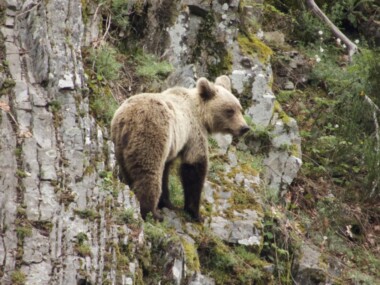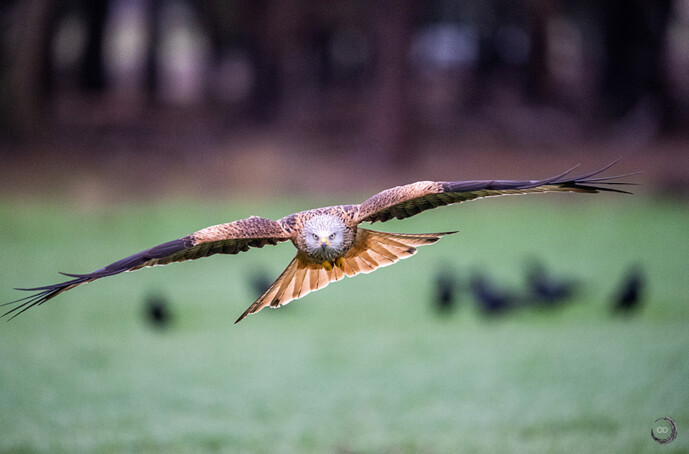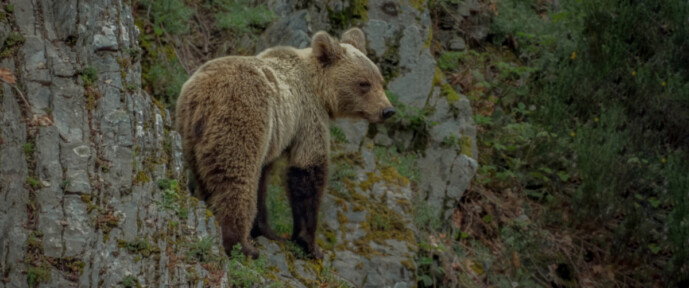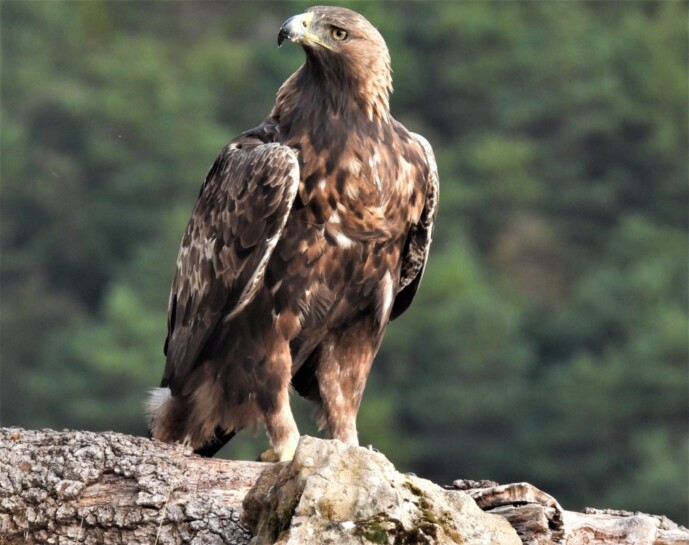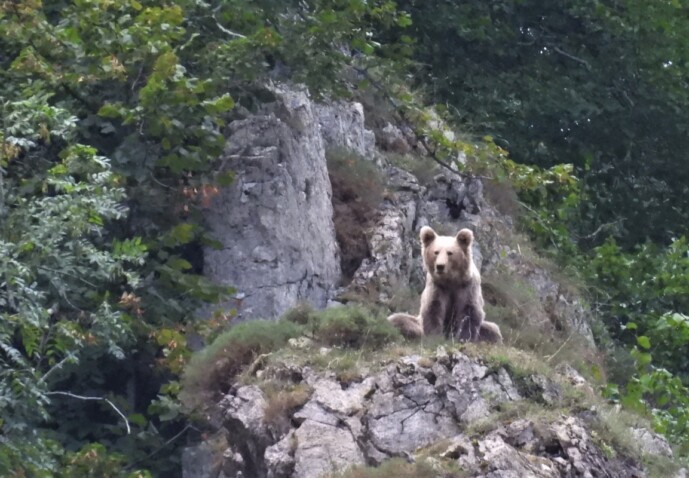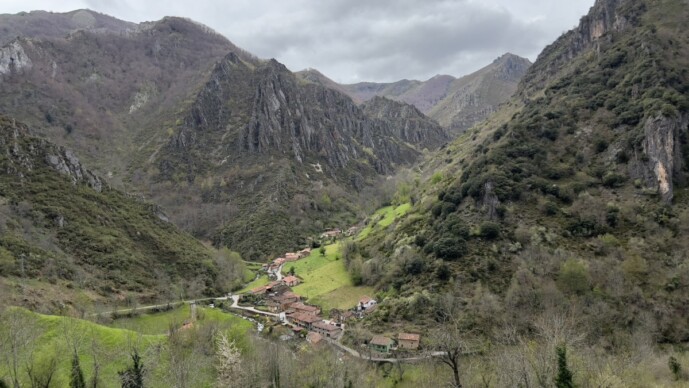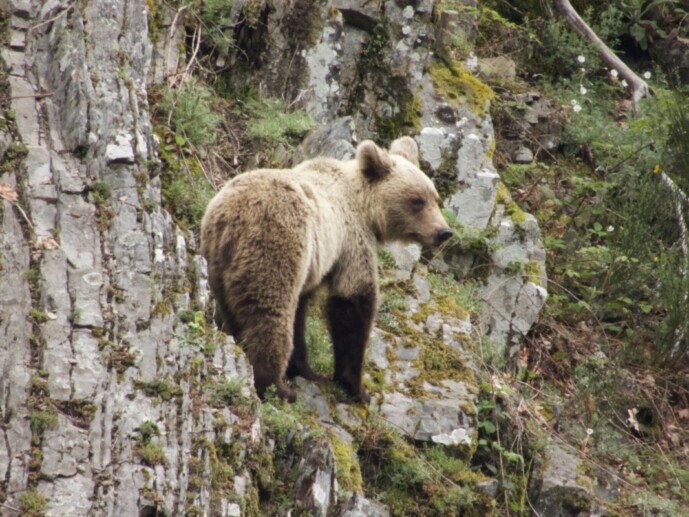Vue d'ensemble
Green Spain is located in the northwest of the Iberian Peninsula and thanks to its proximity to the Atlantic Ocean, its abundant rainfall and its mountainous profile, it offers a landscape very different from other regions of the country. This wilder environment is home to some of the Iberia’s largest carnivores, such as the emblematic brown bear, the endemic Iberian wolf or the elegant wild cat. It is undoubtedly the southernmost place in Europe to observe these fantastic mammals in the wild, but in addition to them we have good opportunities to observe chamois, Iberian deer, mountain goats or spectacular birds such as the Wallcreeper, the Bearded Vulture, the Middle-Spotted Woodpecker or the Alpine Sparrow and the Alpine Accentor among others.
Détails du voyage
Points forts de la visite
Spot brown bears, Iberian wolves, wildcats, chamois, and diverse bird species in Green Spain's lush landscapes.
Admirez les oiseaux marins, les falaises spectaculaires et les plages magnifiques le long de la côte atlantique. Explorez les montagnes cantabriques et les réserves naturelles.
Discover the Basque Country, Cantabria, Asturias, and Castilla y León. Learn about rural history, livestock, and traditional products like Cabrales cheese.
À quoi s'attendre
Lodging: Comfortable
Transportation:
Medium
Prochains départs
5 septembre 2024
15 septembre 2024
6 septembre 2025
16 septembre 2025
Thématiques
Observation d'oiseaux
Photographie
Vie Sauvage
Itinéraire
JOUR 1 - Jeudi 5 septembre 2024
Arrivée et accueil à Bilbao
Visite recommandée de la métropole de Bilbao et de la ville de Getxo, située à proximité. Nous rencontrons l'accompagnateur à l'hôtel à 18h00 pour une présentation, au cours de laquelle nous découvrons de près un restaurant typique de Bilbao...
Visite recommandée de la métropole de Bilbao et de la ville de Getxo, située à proximité. Nous retrouvons l'accompagnateur à l'hôtel à 18h00 pour une présentation, au cours de laquelle nous pourrons assister à un dîner typique de Bilbao.
Lire la suite
JOUR 2 - Vendredi 6 septembre 2024
Urdaibai - Urkiola - Salburua - Bilbao
Le guide passe vous prendre à votre hôtel de Bilbao et vous emmène à la réserve de biosphère d'Urdaibai, où vous pourrez observer des oiseaux aquatiques et migrateurs. L'expérience peut être enrichie par la visite de la célèbre ville de G...
Le guide passe vous prendre à votre hôtel de Bilbao et vous emmène dans la réserve de biosphère d'Urdaibai, où vous pourrez observer des oiseaux aquatiques et migrateurs. L'expérience peut être enrichie par la visite de la ville bien connue de Gernika, où vous pourrez goûter à la spécialité régionale, les pintxos. Après le déjeuner, nous nous rendons dans les montagnes calcaires du parc naturel d'Urkiola, où nous admirons le paysage à couper le souffle et les oiseaux de la forêt comme la mésange huppée et le bouvreuil. De là, nous nous rendons à la zone humide de Salburua à Vitoria, la capitale de l'Alava, où nous pouvons observer une variété d'oiseaux des zones humides, y compris le canard souchet, le râle d'eau et la fauvette des roseaux. Nous nous rendrons à l'hôtel à Bilbao pour dîner et passer la nuit dans la capitale Bizkaienne après une journée fascinante.
Lire la suite
B, L, D
Bizkaia (ou similaire)
JOUR 3 - Samedi 7 septembre 2024
LLanes - Somiedo
We will leave Bilbao early in the morning and stop on the way to visit the steep coastal cliffs of Llanes in Asturias. While we eat a snack and contemplate, we’ll see how the water creates the dramatic blowholes when the...
We will leave Bilbao early in the morning and stop on the way to visit the steep coastal cliffs of Llanes in Asturias. While we eat a snack and contemplate, we’ll see how the water creates the dramatic blowholes when the waves smash against the steep shore. We’ll also have more chances to visit some other neighboring viewpoints and search for birds like the Peregrine falcon, Shag, Garden, and Grasshopper warblers. We’ll keep going after lunch until we get to the Natural Park of Somiedo, which is arguably the greatest spot in Spain to see the majestic brown bear. Since the plantigrade is currently searching for wild fruits in the upper regions of the mountains, that first afternoon we will attempt to be the first to wait in line to try to view it. We will spend the night and dinner in a charming little mountain village close to Pola de Somiedo, where we can also get to know its traditional livestock farming environment.
Lire la suite
B, L, D
Pola de Somiedo (ou similaire)
JOUR 4 - Dimanche 8 septembre 2024
Parc naturel de Somiedo
We will try to see bears at dawn and dusk while spending the day at the Somiedo Natural Park. We will take a break at midday and then visit some of the neighboring shepherds’ cottages, which are quite interesting to see ...
We will try to see bears at dawn and dusk while spending the day at the Somiedo Natural Park. We will take a break at midday and then visit some of the neighboring shepherds’ cottages, which are quite interesting to see and beautifully exhibit the Asturian identity. Fortunately, there is an increasing number of brown bears in the wild, and it is truly satisfying to be able to carefully view these amazing and magnificent creatures. Additionally, there are excellent chances to see chamois, roe deer, and Iberian deer, as well as, with luck, an Iberian wolf. The migration of tiny alpine birds, like the Whinchat in Somiedo, is also best in September.
Lire la suite
B, L, D
Somiedo (ou similaire)
JOUR 5 - Lundi 9 septembre 2024
Somiedo - Riaño
Early in the morning we will make our last wait for the brown bear in Somiedo. In the afternoon we will cross the mountain and head south towards León, to reach the Hotel in Riaño, where in the afternoon we will make our...
Early in the morning we will make our last wait for the brown bear in Somiedo. In the afternoon we will cross the mountain and head south towards León, to reach the Hotel in Riaño, where in the afternoon we will make our first attempt to observe the Iberian wolf with the help of a local guide. This subspecies of wolf is endemic to the Iberian Peninsula and is difficult to observe due to its elusive and wary nature, which has allowed it to survive for centuries in the Iberian Peninsula.
Lire la suite
B, L, D
Riaño (or similar)
JOUR 6 - Mardi 10 septembre 2024
Riaño
Nous allons faire deux observations de loups : une à l'aube et une à la tombée de la nuit. Nous profiterons de la pause déjeuner pour nous détendre un peu et partir à la recherche d'un animal rare, le chat sauvage, qui se nourrit de rats taupiers dans l'ar...
We are going to do two wolf watchs: one at dawn and one at dark. We will take advantage of the lunch break to relax a little and search for a rare animal, the wild cat, which is feeding on mole rats in the surrounding area. This is one of the best locations in Europe to see wolves, who are seeing a population boom in contrast to the wildcat, which is sadly experiencing a significant fall in the wild due mostly to habitat degradation and roadkill. With a more Mediterranean vibe, Riaño is home to a thriving Golden Eagle population and offers plenty of opportunity for other visually appealing species like the Black or Iberian woodpeckers.
Lire la suite
B, L, D
Riaño (or similar)
JOUR 7 - Mercredi 11 septembre 2024
Riaño - Picos de Europa
Après le déjeuner, nous nous dirigerons vers les montagnes où nous nous arrêterons pour chercher la chèvre ibérique et apprécier le paysage et les oiseaux de la région de San Glorio. Nous ferons notre dernière observation du loup à l'aube, et il se peut qu'il y ait un cha...
After lunch, we will head to the mountains where we will stop to look for the Iberian Goat and enjoy the scenery and birds in the San Glorio area. We will make our final watch for the Wolf at dawn, and there may be a chance to see some of the released Bearded Vultures. We will also pay close attention to the Yellowhammer and Citril finches. We will depart from León in the afternoon and travel to the valley of Liébana, in the heart of Cantabria’s Picos de Europa. There, we will explore the old village of Potes and stay at our hotel in Cosgaya. We’ll try different birds along the route, such the Middle-Spotted Woodpecker, and we’ll watch out for foxes and roe deer in the fields beside the road. Additionally, we will discover the significance of the Catholic faith in the Liébana Valley and how it is directly related to the local pomace and wine, which are inextricably linked to the environment.
Lire la suite
B, L, D
Cosgaya (ou similaire)
JOUR 8 - Jeudi 12 septembre 2024
Pics d'Europe
After an excellent breakfast, we will take the Fuente Dé cable car to enter the thrilling Central Massif of the Picos de Europa. We will walk under the striking limestone mountains of the Urrieles Massif, looking for the...
After an excellent breakfast, we will take the Fuente Dé cable car to enter the thrilling Central Massif of the Picos de Europa. We will walk under the striking limestone mountains of the Urrieles Massif, looking for the elusive alpine bird par excellence, the Wallcreeper. In addition, we will pay attention to other very interesting birds, such as the Alpine Chough, the Snowfinch, or the Alpine Accentor, among others. If we are lucky enough, we may spot a Bearded Vulture or one of the migrating prey birds that still frequent the area, in addition to the Alpine Chamois that can be seen amid the cliffs. After lunch atop the mountain in the afternoon, we will take the cable car to the bottom of the valley so we may take a stroll through the forest. We will make an effort to get back early so we may take advantage of the amazing hotel and its lovely views.
Lire la suite
B, L, D
Cosgaya (ou similaire)
JOUR 9 - Vendredi 13 septembre 2024
Picos de Europa - Montagnes de Palencia
We will be able to take various nature walks in the Liébana Valley’s surroundings in the morning, contingent on the weather. We will return to Castilla y León in the afternoon to see one of its treasures, the Palencia Mo...
We will be able to take various nature walks in the Liébana Valley’s surroundings in the morning, contingent on the weather. We will return to Castilla y León in the afternoon to see one of its treasures, the Palencia Mountain, which receives less visitors than its surrounding peaks while having a livestock-oriented nature and being most known for its austere and historically significant Romanesque hermitages. Before heading to the hotel in Cervera, we will explore its woodlands in the afternoon, where we will have the chance to search for the recognizable Middle Spotted Woodpecker amidst its massive oak trees.
Lire la suite
B, L, D
Cervera (ou similaire)
JOUR 10 - Samedi 14 septembre 2024
Montagne de Palencia - Bilbao
En plus d'avoir de fortes chances de voir un lièvre endémique de la Cordillère, le lièvre du piornal, dans les sous-bois bas de ses vastes pentes, nous attendrons sur les pentes sauvages avant l'aube pour chercher...
In addition to having a strong chance of seeing an endemic hare of the Cordillera, the hare of the piornal, among the low undergrowth of its vast slopes, we will wait on the wild slopes before dawn to search for any of the species already described.
Lire la suite
B, L
Bilbao (ou similaire)
Prix
Conditions générales d'utilisation
Les conditions de vente peuvent varier en fonction de la nature de votre voyage et de la proximité de votre date de départ. Veuillez consulter nos conditions ici pour plus d'informations .
Recommandations
The observation of wild mammals is at its best at dawn and dusk and will be done outdoors, so it requires attention and effort on the part of the visitor to locate the animals and to be able to remain calm in the same place for several hours.
Espèces Observées
Voici une liste non exhaustive des espèces animales que vous pourrez apercevoir au cours de cette excursion
Ours brun
L'ours brun est l'une des plus grandes espèces d'ours, que l'on trouve en Amérique du Nord, en Europe,...
Découvrir
